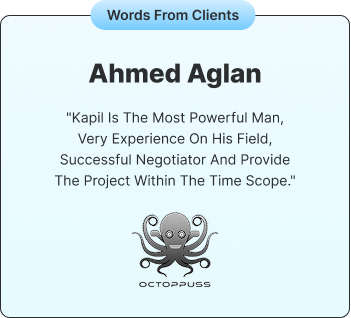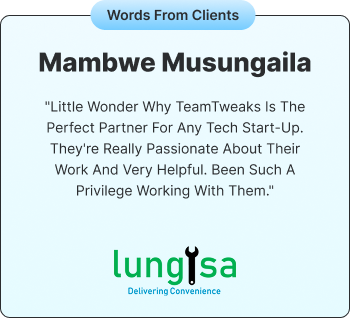Generally, before starting with any project implementation, a query is raised among many of us that which development methodology is an apt one. Obviously, it is a trickier one and a hypothetical too; more discussion has been conducted already and still, now it is a hot topic too. In this modernized technical era, there are two popular methods for managing the projects efficiently. The first one is the Waterfall known to a complete traditional one but still followed in most of the projects. Next, it is Agile intended for rapid application development. In this present world, software companies are dealing with exclusive products and to provide a technological solution for every issue.
![]() This gigantic is a precise linear approach that is suitable for any type of development. It is a step by step process, used by most the organizations boasting a comprehensive hierarchical structure.
This gigantic is a precise linear approach that is suitable for any type of development. It is a step by step process, used by most the organizations boasting a comprehensive hierarchical structure.
Collection of requirements
In the initial stage, all the requirements will be collected and documented. Then the feasibility level will be checked to check whether the project can be developed successfully or not. The actions will be carried on based on this typical documentation. The client’s project performance is initiated at the first and last stages.
Design
Here, the code builders try to explore an apt form to meet the user’s requirements.
Coding
Here, the coding process will be progressed in a suitable platform.
Testing
![]() Once the development is completed, testing of code is done to check the bugs. Both the system and user acceptance are tested.
Once the development is completed, testing of code is done to check the bugs. Both the system and user acceptance are tested.
Fixing of issues
In case of any issues, it will be fixed and any customization is needed it will also be processed.
Delivery of the product
Finally, the product after going through the above-mentioned phrases, it will be delivered to the customer.
Coming to the point of the positive side, first the code builders and the clients agree to a point, regarding the delivery result earlier in the development lifecycle. Hence, it is a proved straightforward planned and designed approach.
As the complete scope of the project is known well in the advance, the progress is easily measured.
From the initial phase to the final phase, it is feasible for several members to involve themselves, dependent on the active phase of the project.
The experts in the field of business development can gain knowledge about the document need to be processed, while the other professionals working for the other exclusive projects. The Quality Analysts can test the several scripts starting from the phase of the requirements, while the coding is underway.
The customer presence is not required for all the phases which are a great benefit. Only for the approvals, status meetings, and reviews their involvement is needed.
![]() As we know each coin has both head and tail, this gigantic approach has disadvantages too.
As we know each coin has both head and tail, this gigantic approach has disadvantages too.
Once the project is completed the user may not be satisfied with the results. Since the project was implemented on the initial documentation, it may not meet the user’s expectations. Hence, it is clear that fixing issues at this concerned stage may require more extra cost.
Rainfall methodology is not an apt one for the long, complex and on-going developments. Measuring each progress is extremely difficult to measure the overall progress within the phase structure.
Here, the end-users are excluded since each systematic step takes place internally. And also enormous division is costlier at the pint of delay testing.
Generally, Agile is completely different from the Waterfall methodology, an iterative one boasting of rapid delivery of an app in the terms of functional components. There is no any allotment of tasks or schedules, just phases are time-boxed known to be the sprints. Here, the total duration is counted in weeks with a series of deliverables, planned at the commencement period.
They are typically prioritized by the enterprise value which is determined by the user. In case if the planned sprint work cannot be progressed at the right time, the work is reprioritized and all the collected data can be used for the future. A higher level of client involvement is required completely for the project. The reviews cannot proceed without the client’s presence and hence their involvement is more important than anything else.
![]() Since the customers have more opportunities to be involved during the development of the project from the initial stage to the final stage, the changes can be done then and there and decision-making is at its peak.
Since the customers have more opportunities to be involved during the development of the project from the initial stage to the final stage, the changes can be done then and there and decision-making is at its peak.
As there is a direct relationship between the customer and the project team, there is a top-notch sense of ownership.
A complete basic version of working software is seen in the successive iterations. It catches with a flexible response to a flat enhancement.
When compared to the Waterfall method, there is a lack of structure and it demands a highly proficient team. Without the cross skilled members, the project can be a literal challenging concern.
This methodology is a little bit difficult to practice and the team members must be thorough with the differential Agile concepts. More commitment and involvement is needed to practice the Agile type.
Due to the tendency of neglecting documentation, the expertise should maintain a completely right balance between the implementation module and documentation.
Some of the customers may not have time or not may be interested to participate in the project review, at that time it may be led to a big problem.
![]() From the above-discussed points, it is clear that both the Agile and Waterfall methodologies possess their privileged strengths and weakness. Here, a precise explanation is given for the exact differences between the two approaches, shadowing the pros and cons of each intended model. Either it may be traditional or popular fame, a company’s decision is based on several factors such as individual goals. Multiple teams, clients, projects and the entire development process to be a successful one. It is in our hands to choose the right one which is dependent on the requirements. Hence be careful about opting for the right methodology!!
From the above-discussed points, it is clear that both the Agile and Waterfall methodologies possess their privileged strengths and weakness. Here, a precise explanation is given for the exact differences between the two approaches, shadowing the pros and cons of each intended model. Either it may be traditional or popular fame, a company’s decision is based on several factors such as individual goals. Multiple teams, clients, projects and the entire development process to be a successful one. It is in our hands to choose the right one which is dependent on the requirements. Hence be careful about opting for the right methodology!!










